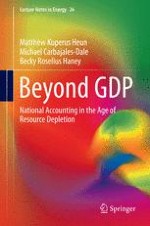
2015 | OriginalPaper | Buchkapitel
1. Introduction: The End of an Era
verfasst von : Matthew Kuperus Heun, Michael Carbajales-Dale, Becky Roselius Haney
Erschienen in: Beyond GDP
Aktivieren Sie unsere intelligente Suche, um passende Fachinhalte oder Patente zu finden.
Wählen Sie Textabschnitte aus um mit Künstlicher Intelligenz passenden Patente zu finden. powered by
Markieren Sie Textabschnitte, um KI-gestützt weitere passende Inhalte zu finden. powered by